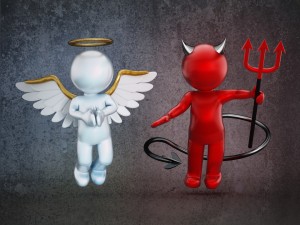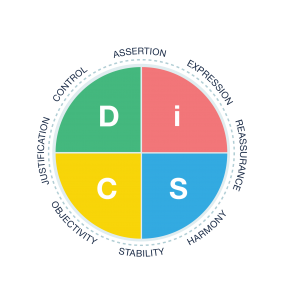
Conflict: Do we really choose our response?
Conflict is everywhere. It’s inevitable. It’s also been called “the spice of life”. How do we recognize when conflict is productive or when it has escalated to destructive behaviors and damaged relationships?
In the workplace conflict can be uncomfortable for many people. I’ve often heard admissions after a blow-up such as: “He made me so mad! I couldn’t help it. He was pushing my buttons again so I just let him have it!” I’ve worked with managers and individual contributors who have a strong passion for their work but are quickly angered by someone else who has a strong, opposing opinion.
This scenario creates an image where a stimulus causes a reaction. It means “the devil really did make me do it. I have no control when someone says or does something that upsets me.”
Let’s frame the scenario differently. What if . . . there is even a split-second opportunity for you to stop and take control of the upsetting situation? In the model below, we see conflict erupting which triggers an automatic thought (or emotion). The dotted line indicates that you do have the option of first stepping back and reframing the situation. Only then are you equipped to react with a productive (constructive) response.
Reframing the Conflict
Can we train people to use this technique? In “Conflict Management” workshops we begin by distinguishing between productive and destructive conflict. Conflict can be very good for improving the status quo. New product ideas, improved customer service, better teamwork, etc. can result from simply encouraging differences of opinions and viewpoints.
Encouraging Productive Conflict
- Self-awareness. Individuals need to understand their natural style when faced with a conflict situation. In our conflict workshop, we use a new behavioral style assessment tool (Everything DiSC® Productive Conflict) to identify a person’s natural style as shown below. Participants learn about their own behavioral tendencies but also learn that people are very different. They learn how to respond differently based on the other person’s natural style.
- Next participants learn how to step back (even momentarily) from a trigger (sparking conflict) and reframe their perception of the situation.
- After learning healthy communication strategies, a person can choose a productive response over a combative response.

DiSC Styles and Conflict Priorities
Notice, for example, how the S style prioritizes “harmony” in the workplace. The D style, however, prioritizes “control”. By understanding the natural differences in priorities, each individual (if they understand style differences) can choose behaviors that are more likely to build the relationship rather than damage it.
In summary, conflict can be a key competitive advantage for teams. If left to chance, however, it can also destroy teams. As a leader, take advantage of the many resources available to you. Help your team grow and achieve results through healthy, productive conflict!
For more information, contact Kathy Cooperman, KC Leadership Consulting, LLC, www.kathycooperman.com, kathy@kathycooperman.com Toll Free: 1.866.303.1996 or 720.542.3324.



{ 0 comments… add one }